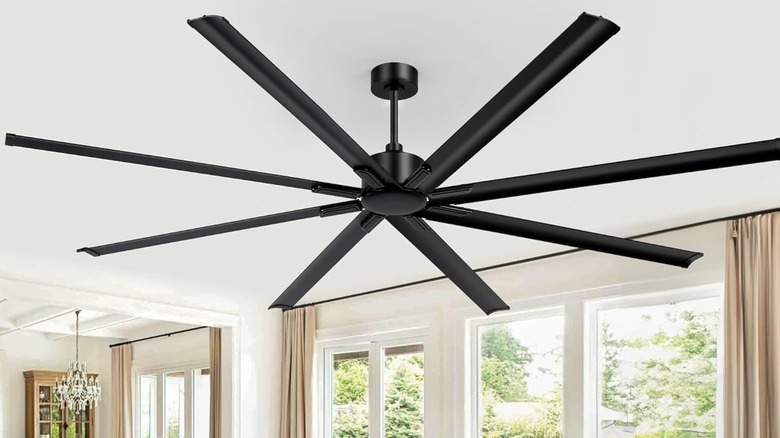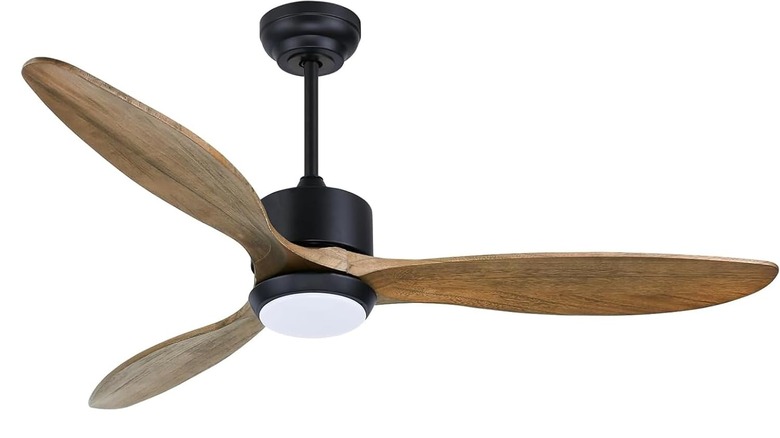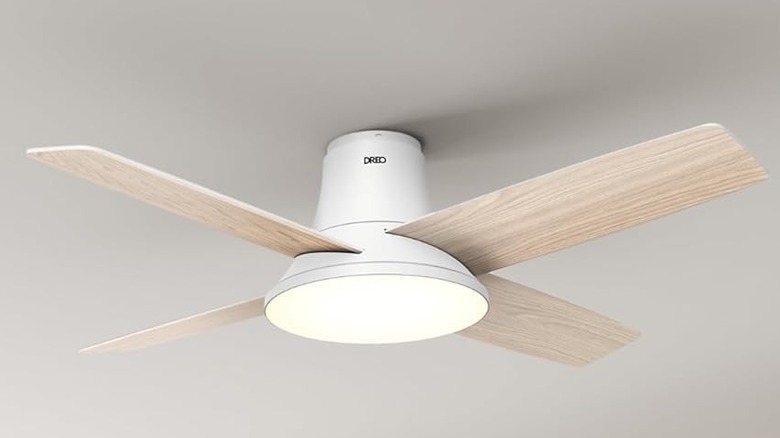This Is The Easiest Way To Make Your Ceiling Fan Smart
We may receive a commission on purchases made from links.
In an increasingly connected world, the right selection of smart devices can bring you and your home into the future. And by "the future," we don't just mean one of convenience, but an ideal one wherein you enjoy the benefits of a connected lifestyle while still reducing your impact on the environment. The idea of overhauling your home with endless gadgets can be daunting, but one simple thing you can do is optimize appliances you use for hours nearly every day — your ceiling fans. Even the most basic ceiling fans use significantly less electricity than air conditioners. While there are times that do call for air conditioning, using it in tandem with ceiling fans can keep you just as comfortable while still saving money and energy.
However, to get the full benefits of those savings, you'll want to consider a smart ceiling fan. Smart energy fans can save you even more money, especially when they have features like activation conditions and room occupancy sensors. Unfortunately, smart ceiling fans cost a pretty penny. In addition, they can be difficult to install, and may not be allowed in some rental properties. Not to mention, you may be attached to the aesthetics of the fan that is currently gracing your home or it may have some sentimental value. Thankfully, it's not terribly difficult to add a smart switch to a standard ceiling fan.
Smart switches have their limitations
If you're looking for a relatively affordable way to get more out of your ceiling fan, a smart switch may be right for you. With smart switch integration, you can enjoy remote on/off functionality and sometimes advanced features like smartphone app integration or voice control. With some systems, it's even possible to track usage data or set a schedule to turn your fan on and off.
It's important to bear in mind that this solution isn't perfect for every situation. While some smart switches keep working manually when your wi-fi goes down, many don't manage complex functions like speed or directional control. In addition, it may take additional investment beyond a switch to make your fan truly smart. For example, to enable temperature or occupancy-triggered operation, you will probably need to invest in separate sensors that are already integrated into many smart ceiling fans. That said, smart switches are some of the most versatile, easy-to-install devices that can advance your smart home experience. In addition to controlling your ceiling fan, there are plenty more clever uses for smart switches in your home; from lowering your expenses to making life feel a little more magical.
Smart ceiling fans are just one way to keep cool
When it comes to keeping your home cool, smart ceiling fans are only one part of the equation, in part because their design can limit where they're installed. After all, it may not be ideal (or even possible) to mount a fan in your home's hottest spots, and smart fans or switches typically need a strong connection to yout home wi-fi network. It's also likely that not everyone in your home is comfortable at the same room temperature, so it might be best to supplement your ceiling fan or fans with floor or desk fans. With fans that aren't mounted high off the ground in fixed positions, you'll have a lot more options in terms of directing airflow where it's needed most.
If you already have a standard ceiling fan installed, hanging a new smart fan from that same mount should be fairly straightforward, although a bit more complex than putting in a smart switch. Another option is a cordless battery-powered fan, which can even save your life in case extreme heat knocks out your power. Cordless fans are also great companions when you're working outdoors, on a camping trip, or just barbecuing on your patio. You can even bring some portable fans on airplanes, although most plane cabins are cool enough to begin with.


